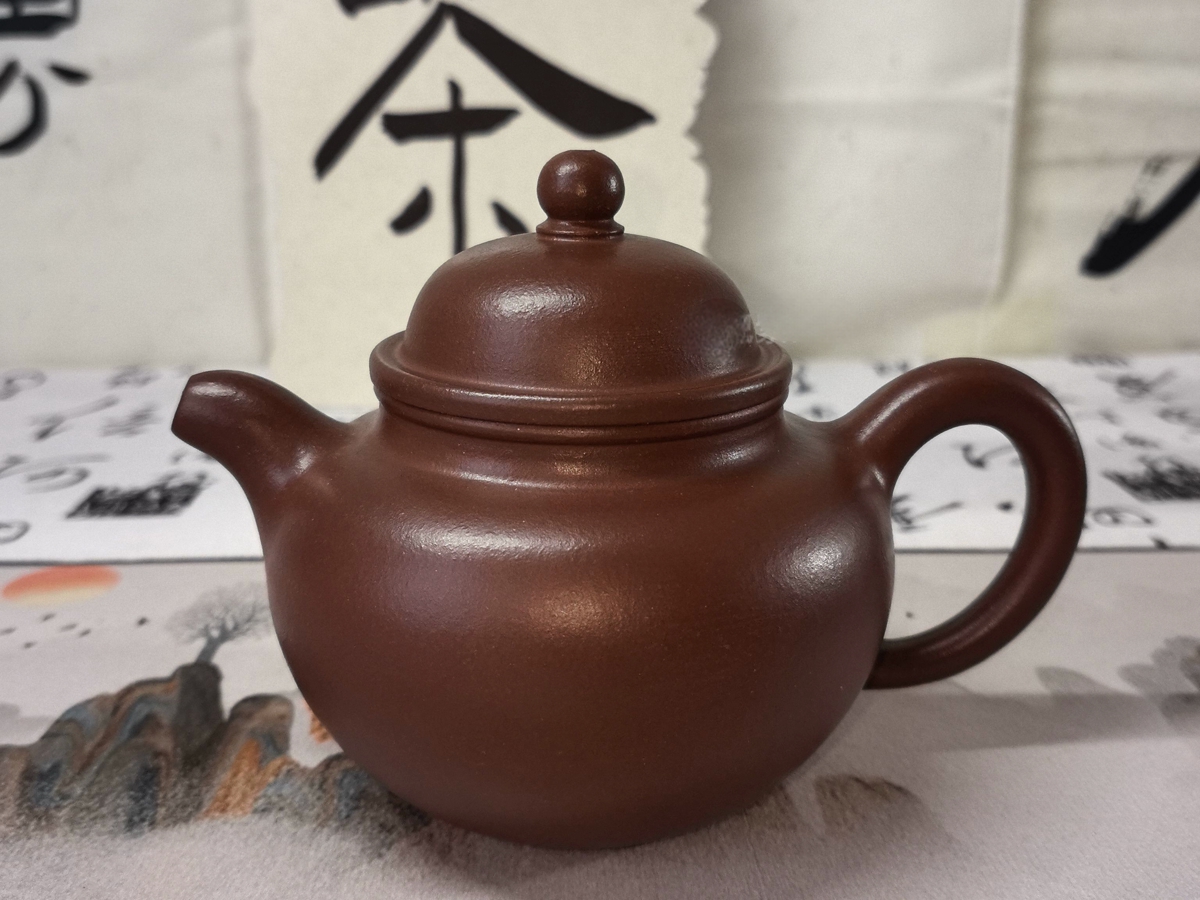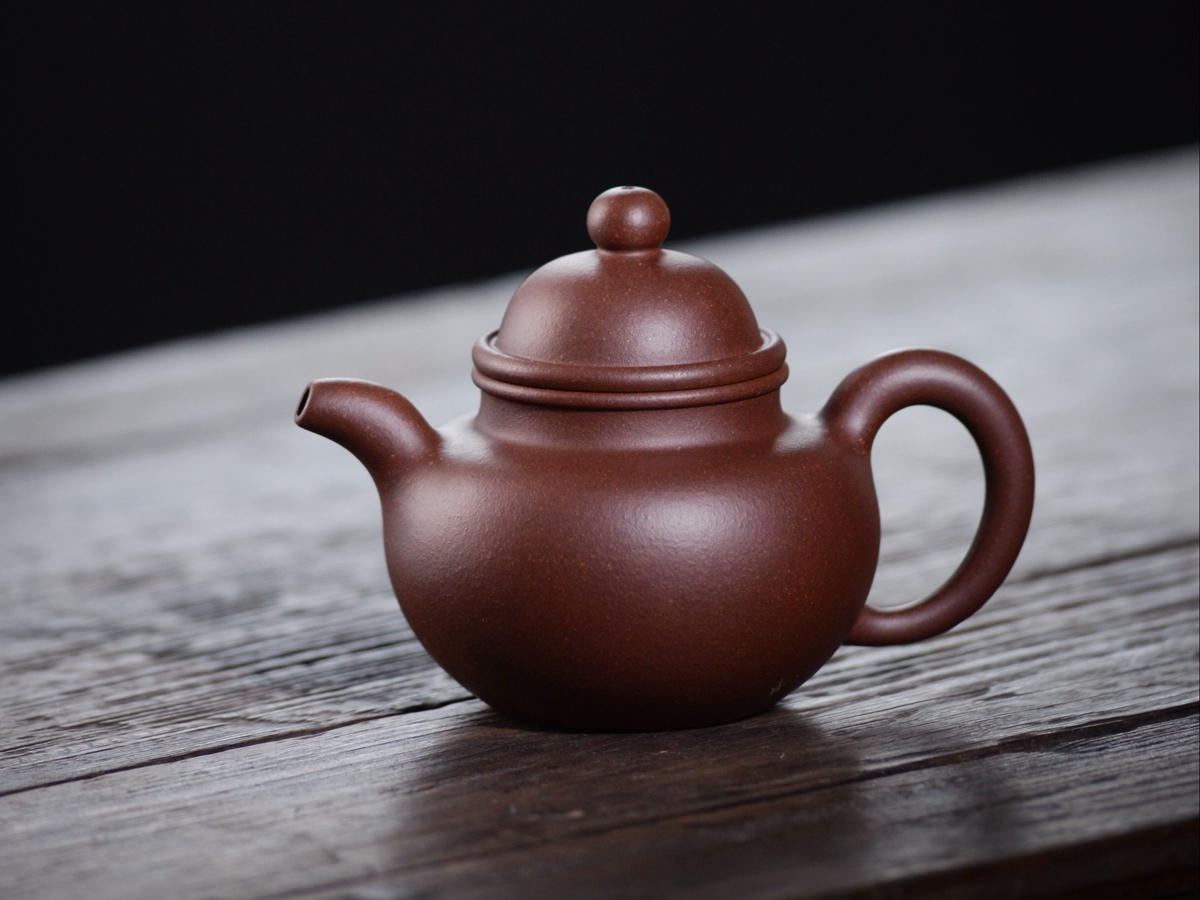Teapots Do Qiu (掇球)
The Do Qiu teapots are one of the most expressive and mysterious creations of Chinese tea art. They are distinguished by their unique shape, reminiscent of a falling ball, which has become a kind of emblem of a certain era in the development of teapot design. This shape deeply reflects the philosophical and aesthetic ideas inherent in Chinese culture.
History of origin
The first examples of the Do Qiu teapot (Chinese: 掇球壶, pinyin: Duō qiú hú) appeared in China during the Qing Dynasty (1644–1912). Soon after their creation, these teapots gained wide recognition among connoisseurs and lovers of Chinese tea. This form is especially closely associated with the masters of Jiangsu Province, namely the city of Yixing, which is famous for its centuries-old traditions of producing high-quality ceramics.
Although the Do Qiu teapots were very popular, their shape, along with other teapot shapes, was not strictly classified until the end of the 19th century. This period was marked by the active development of Chinese tea craft, when masters sought to harmoniously combine the practical functions of the products with the philosophical and aesthetic concepts that have always played a key role in Chinese art.
Design Features
The main distinguishing feature of the Do Qiu teapots is their original shape, reminiscent of a falling sphere. The round body of the teapot gradually narrows towards the base, and its characteristic curved spout and protruding lid give the product a sense of dynamics.
- Shape: The ribbed or slightly rounded surface of the body creates the impression of a moving ball, symbolizing not only dynamism, but also harmonious interaction with natural forces, which is an important component of Chinese philosophy.
- Materials: Traditionally, high-quality clay such as jisha (紫砂) is used to make these teapots, which has special properties that allow you to regulate the temperature of the drink and preserve the aroma of the tea.
- Spout and handle: The curve of the spout provides convenience when pouring tea, and the ergonomic handle allows you to hold the teapot securely even with one hand. All design elements are combined in such a way as to make the use of this complex object as comfortable as possible.
Symbolism and Philosophy
The Do Qiu shape is filled with deep symbolic meaning. In Chinese culture, the sphere symbolizes integrity and harmony, as well as constant movement. This echoes the concept of yin-yang, according to which opposing forces, such as movement and rest, are in constant interaction and form a single flow of energy.
In addition, the shape of the teapot can remind one of a cup or a goblet, which in Chinese tradition is associated with respect for the rituals of drinking. Handcrafting such objects gives them a special status as works of art, reflecting the talent and inner world of their creator.
Interesting facts
- Masters of Yixing: The city of Yixing is considered one of the main centers of Chinese tea art, and the ancient traditions of making "Do Qiu" teapots are preserved here. Products from Yixing are recognized as some of the best in the world.
- Influence on other cultures: The shape of the Do Qiu teapot has influenced not only Chinese traditions, but also the cultural customs of other Eastern countries, as well as some Western countries. In Japan and Korea, similar shapes can often be found in tea ceremonies, where the visual appeal of the teapot is of great importance.
- Technology and Art: The process of creating Do Qiu teapots requires a high degree of skill and great patience. Craftsmen create unique pieces using a minimum number of tools, which makes each piece absolutely individual.
Do Qiu Teapots in Contemporary Culture
Today, Do Qiu teapots continue to be popular not only in the context of traditional Chinese tea drinking, but also find their place in modern art and design. Collectors and art lovers consider these teapots not just as a functional object, but as a true work of art.
Over the past few decades, such teapots have become not only collectibles, but also part of the expositions of various cultural and art exhibitions. In addition, they increasingly appear in interiors decorated in a style inspired by traditional Chinese motifs and philosophy. Modern craftsmen are experimenting with new approaches to creating similar forms, while remaining true to traditional aesthetic standards.
More than just a vessel for making tea, Duo Qiu teapots embody key principles of Chinese philosophy, aesthetics and artistic creativity. Their form and symbolic content reflect the most important aspects of Chinese culture, such as the desire for harmony with nature, the balance between activity and calm, as well as attention to detail and high craftsmanship. These teapots remain relevant and in demand in modern society, combining the traditions of the past and the innovations of the present, attracting both collectors and modern tea lovers.
- Comments
- Vkontakte








